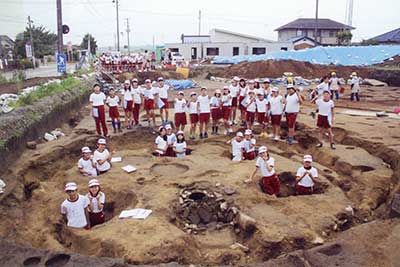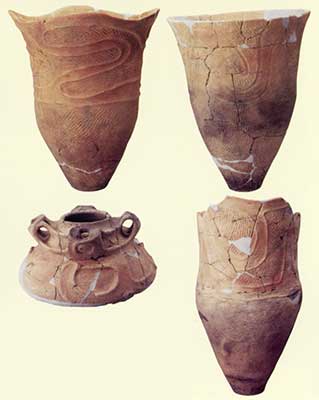Azuma-chō:
As many as 27 Jōmon period pit buildings stood lined up in cramped fashion.
Azuma-chō Site,
Minamisōma City, Fukushima Prefecture
Middle Jōmon period (approximately 4,500 years before the present)
A core-type settlement of the Middle Jōmon period
The Azuma-chō site is located at an elevation of 20 m, at the edge of a river terrace on the south side of the Niidagawa river, which flows through the central portion of the city of Minamisōma on the Pacific coast of Fukushima prefecture. The current excavation was conducted in advance of a group location project for disaster prevention, consisting of residential land development for tsunami victims.
As a result of the investigation, the presence of a settlement of the Middle Jōmon period (approximately 4,500 years before the present) became clear. A large volume of Jōmon pottery centering on deep-bottomed pots was found, along with a variety of stone tools including stone pestles and grinding stones, plus stone projectile points and adzes, together with 27 pit buildings, storage and other pits, and so forth. Also, 15 of the pit buildings were equipped with composite hearths, peculiar to the Tōhoku region, on the southern side of the dwellings.
These features were ascertained in overlapping fashion across an excavated area of approximately 2,000 square meters, and the pit buildings are thought to have been rebuilt over three or four periods. As the density of residence is extremely high, the residential precinct is thought to extend beyond the area of excavation, and may be called a core-type settlement of the middle Niidagawa river basin. (Saitō Takashi, Yamasaki Takamori)



